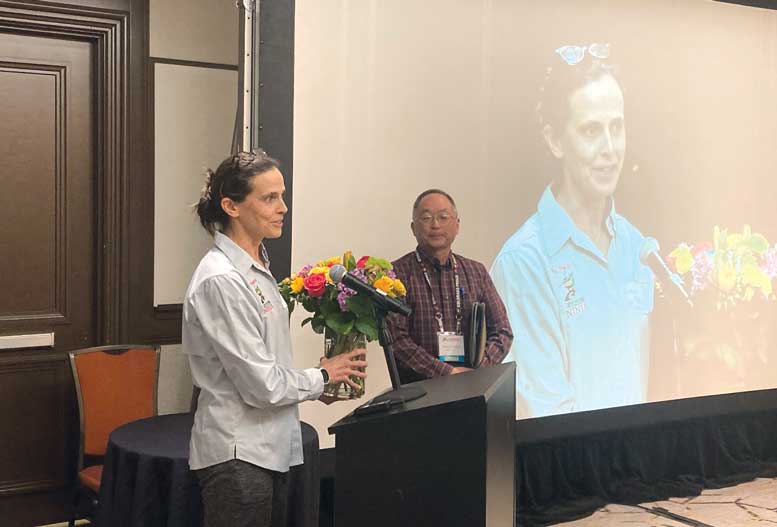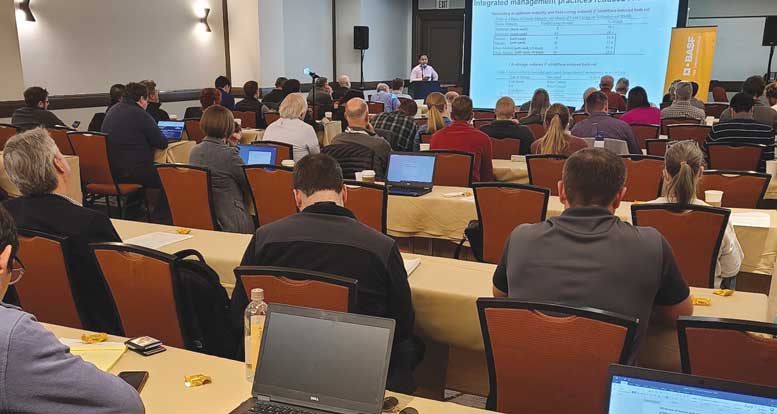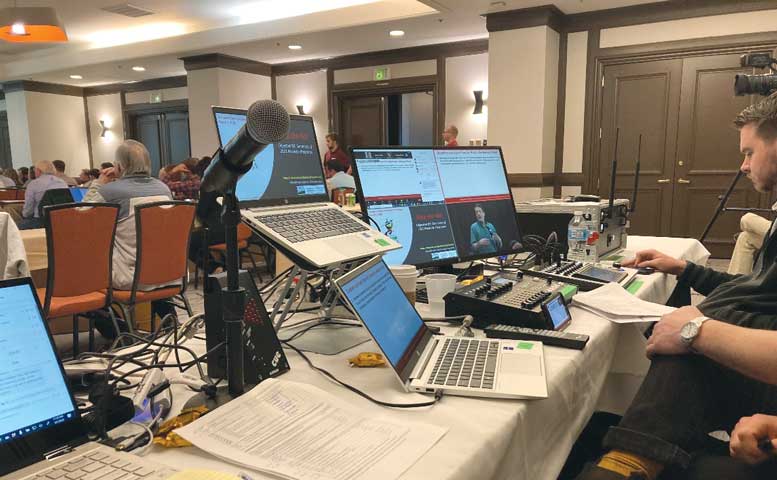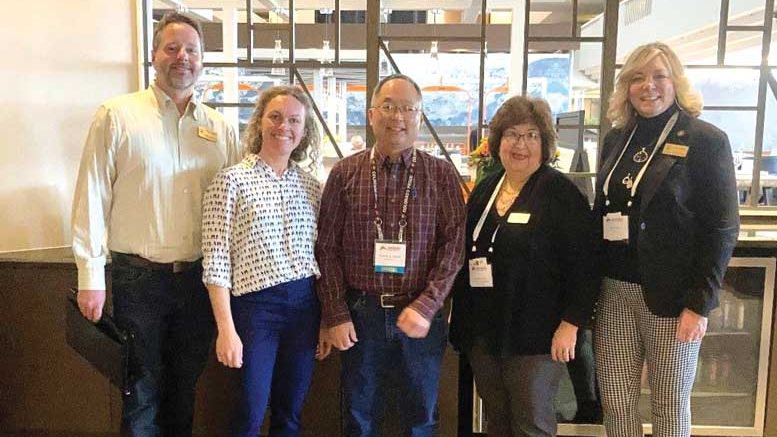|
Click to listen to this article
|
By Heather MacKay and Lindsey du Toit, Stop the Rot Project
Mike Havey, National Allium Research Conference
Peter Rogers, W-3008
With the ultimate goal of helping onion growers increase crop yield and quality, a trio of onion research groups met to share information on onion breeding, production and disease management. The three research groups held a joint meeting in Denver, Colorado, on Feb. 28 – March 2. The National Allium Research Conference (NARC), W-3008 multistate research project on integrated onion pest and disease management and the “Stop the Rot” research project team gathered in person and online, in association with the Colorado Fruit and Vegetable Growers’ Association, which was holding its annual meeting at the same time in Denver.

NARC, W-3008
Presenters shared some of the latest research on onion cultivation and breeding, along with disease, pest and weed management, during the NARC sessions. This was followed by reports from all participating states in the W-3008 project comprised of onion bulb production, climate influence, and disease and pest pressures encountered during the 2021 growing season. Topics of discussion included the paucity of water resources and extreme temperatures in western production regions and their effects on bulb quality and yield. The loss of registrations of important pesticides and the increased prevalence of Stemphylium leaf blight have presented significant challenges to both bulb and seed crops. Progress was presented on the selection of onion germplasm for resistance or tolerance to Fusarium basal rot, thrips and Iris yellow spot virus.
During the W-3008 session, a wide range of research efforts were on display, outlining pesticide efficacy studies for foliar diseases, onion variety resistance evaluations, new research methods, recent publications and extension outreach to commercial growers. Researchers and growers alike expressed the need for continued multistate research on Alliums, including strong support for a W-4008 with a broadened focus to include additional pests and weed challenges of onion.

Stop the Rot
The Stop the Rot project team presented the most recent results of research in this four-year, USDA-funded project focused on bacterial diseases of onion. Stop the Rot researchers are studying the whole pathogen-host-environment system, attempting to unravel some of the complex interactions of bacteria, onion plants and production practices.
In the regional survey of bacterial strains across seven participating regions of onion production in the U.S., the team has found a much broader diversity of bacterial genera associated with symptoms in onion plants and bulbs than expected, but few of these genera have proven to be pathogens when tested on onion tissue in the laboratory. There were distinct differences in the pathogenic bacteria prevalent across the major regions of production in the U.S. Understanding the genetic basis for pathogenicity in bacterial strains is a key objective of the research in order to develop more effective and targeted bacterial disease diagnostic tools.
Another important element is the series of field trials being carried out across U.S. onion production regions to evaluate the efficacy of irrigation, fertility, pesticide, post-harvest disinfection application, and cultural practices for management of bacterial diseases of onion in the field and in storage.
Results to date indicate that irrigation practices probably have some of the most important impacts on bacterial diseases of onion in semi-arid regions of production. Terminating irrigation in a timely manner and using drip irrigation instead of overhead irrigation resulted in big reductions in losses to bacterial bulb rots.
In field trials in Georgia, mechanical harvest with a bed-ridge undercutter resulted in more bacterial bulb rot compared to mechanical harvest with a chain-digger. Also, manual harvest of onion bulbs resulted in far more bacterial rot than mechanical harvest with a chain-digger.
Another field trial demonstrated that topping onion bulbs manually to a neck length of 3 inches or 5 inches resulted in far less bacterial bulb rot than cutting the tops to a neck length of 1 inch. Application of hydrogen peroxide + peroxyacetic acid disinfectant products to onion bulbs after harvest did not prevent bacterial bulb rots from developing in storage.
Bactericide trials in multiple states revealed very different results for winter production in the southeastern U.S. than summer production in western and northern states. Several bactericide treatments were effective at reducing losses to bacterial leaf blight and bulb rot in Georgia, but bactericides were ineffective in other states. This appears to be related to the different spectrum and timing of bacterial pathogens infecting overwintered onion crops in the southeast compared to other states.
The economic returns of management recommendations based on results of all these field trials are being calculated for different regions of onion production.
Participants also remembered the work of the late Dr. Steven Beer of Cornell on bacterial diseases of onion over many years, which provided important insights for the Stop the Rot project. Over the past two years, Beer had graciously provided isolates of many onion bacterial pathogens for this project.

Collaborative Meeting
In total, 95 people attended this event, which offered a great opportunity for participants to interact with researchers, growers and specialists involved with all aspects of the Allium industry. The chance to meet in person, after a long time of virtual meetings, was welcomed by all, and many good discussions ensued along the sidelines.
Posters and presentations from the joint meeting are available for viewing on the Alliumnet website at www.alliumnet.com/narc.

